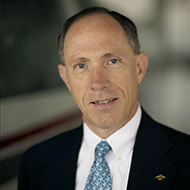Other regulations cover knowledge of critical weather situations, use of weather reports and forecasts, along with decision making and judgment. We don't yet know precisely what happened in the Kennedy case, but there is some evidence to indicate that the weather at the reporting points was better than that en route. Visibility was reported between eight and 10 miles in various locations, with lower visibility in other places. A weather report is only valid for a five-mile radius around an airport. If automated weather reporting is used, it represents only the weather in the immediate area of the sensor. Automated weather reports will not tell of clouds or reduced visibility around the fringe of the airport or even at the opposite end of the runway. The point that should be engraved in every new pilot's psyche is that the weather between reporting points can be much worse than at the airport. Forecasts are not guarantees. The weather is what is seen through the windshield, not what you were told or hoped it would be. Speculation at this time is that Kennedy may have descended into a fog bank west of Martha's Vineyard.
The route out to the islands south of Cape Cod is well-traveled on summer weekends, so there was an excellent opportunity to gather pilot reports. Here is a chance to find out what other pilots are actually experiencing. The forecast may be reasonable, and yet actual conditions may not be safe for VFR. There is no evidence at this time that Kennedy asked for any pireps. Do your students know how to give and get pireps?
A very important point: On a moonless night over a sparsely populated area or water, flight by outside references will not be possible. Despite reports of good visibility and high ceilings, pilots will be "on the gauges." Clouds will be impossible to see before the aircraft enters them. The navigation lights on the wing tips will glow when the aircraft is in a cloud. Should that happen, note your heading and altitude and make a gradual 180-degree turn to fly back into visual conditions. Then it's time to decide on an alternate plan that probably does not include getting to your intended destination. If you are not on top of your game, this is not a good time to practice. As the old saying goes, "Experience is a hard teacher because she gives the test first and the lesson afterward."
The decision chain on Kennedy's final flight will be thoroughly debated, and vision is always clearer looking back. There is no question that a pilot has more options during the day than at night. An understanding of the climate in which one operates is essential. In this case, fog that forms rapidly may have caused the loss of visual contact with little warning. Then, the pilot needs a contingency plan. When the options for completing a flight are reduced to one, the risk goes up dramatically.
The night training that is given for the private pilot certificate is fine for good VFR conditions in well-lit areas. Practice in the traffic pattern is fine. It can be done safely, as proven by the fact that thousands of night VFR flights are completed safely every month. However, the basic training requirement is not intended to prepare the new pilot for extended night flight under adverse conditions. More training is needed, and getting it is an excellent way to continue your flight education after earning the private certificate. Flight instructors have an obligation to help new pilots understand that.



